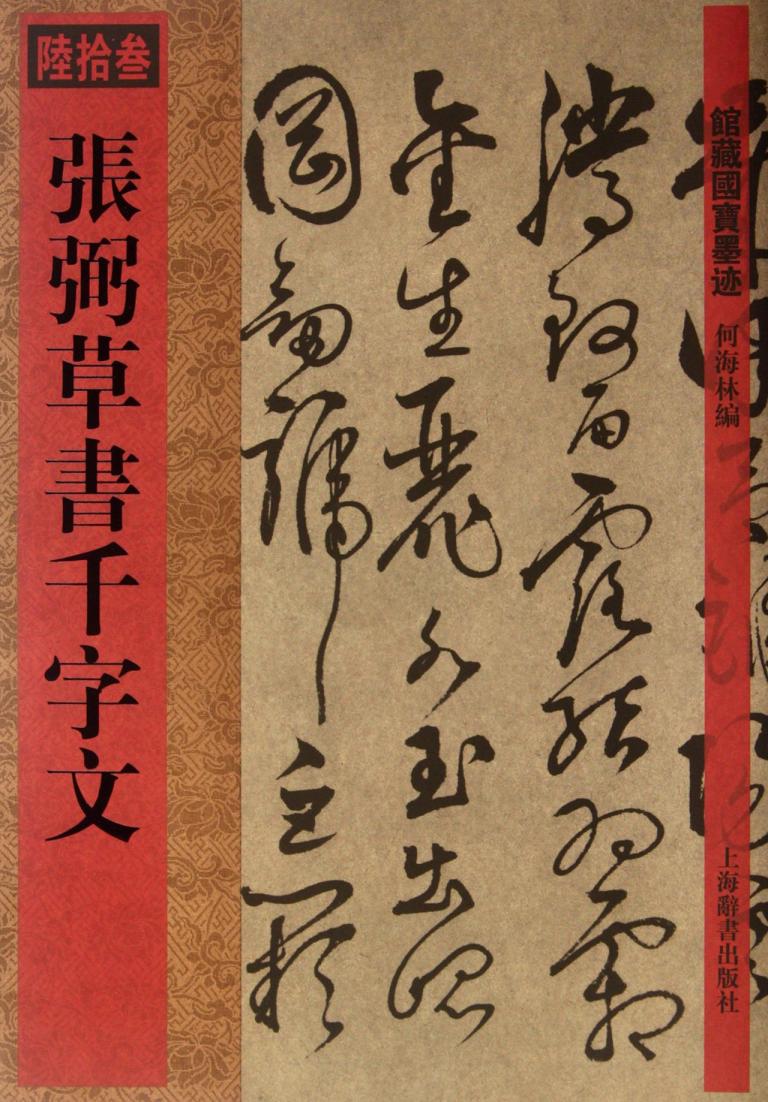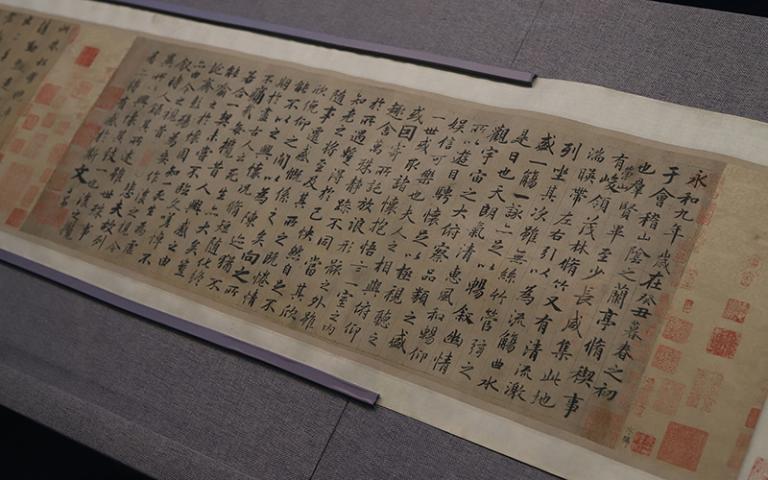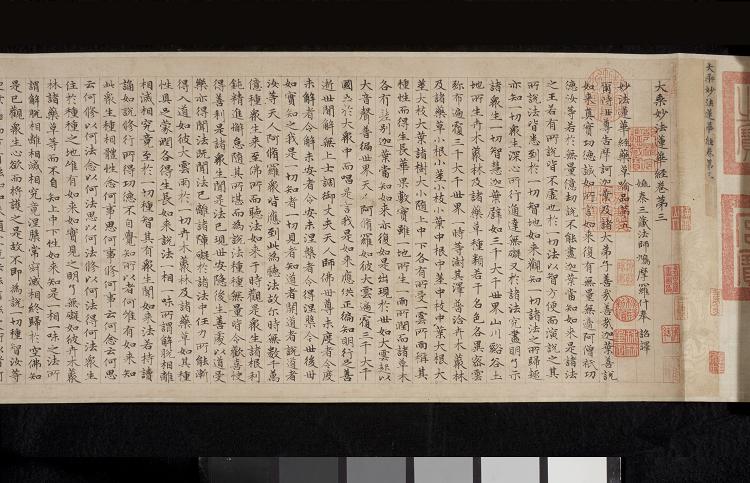Zhao Mengfu: Grand Master of Calligraphy
4 min readIn 1271, Emperor Shizu of the Yuan dynasty, Kublai Kahn changed the title of reigning to Great Yuan. In 1279, he defeated thethe Southern Song dynasty and ended the lasting splitting situation between the south and the north. After having taken control of the central part of China, Mongolians gradually changed their concept and took the policy of learning from Han nationality.

They also learned from Confucianism and Han laws and selected Han talent through imperial examinations which actually preserved Chinese traditional culture. With its practical function in Chinese culture, calligraphy was bound to be adopted by the governing class. Kublai Kahn had asked his son and grandson to practice calligraphy after those famous scholars. No wonder the exquisite calligraphy given by Zhao Mengfu won great recognition from the emperor and all officials. Kublai Kahn advocated for classic calligraphy, and all officials followed him. Moreover, his idea of “returning to the ancients” involved some national consciousness to resume Chinese tradition, which satisfied psychological demands of all Han intellects. This was known as the “returning to the ancients” thought. And Zhao Mengfu was the first representative of the thought trend. Besides, there were also Yu Shu and Yu Ji, etc. They formed a group of calligraphers and the “returning to the ancients” trend they advocated lasted through the whole Yuan period. Zhao Mengfu (1254-1322), courtesy name (zi) Zi’ ang, courtesy name (had) Taoist of Pine and Snow and Taoist of Yongjing Palace, was a native of Wuxing (now Huzhou in Zhejiang). He was a descendant of Zhao Kuangyin, Emperor Taizu of the Song dynasty. Zhao Mengfu began to learn calligraphy when he was five and worked very hard in calligraphy practice all through his life.

In his regular script, maintaining the preciseness of the Tang regular script, he added some elements of semi-cursive script to regular script. His calligraphy, known as “Zhao Style”, was with chubby strokes as well as elegant, symmetric and graceful structure. It was an innovation of regular script and ended the creativity-lacking period for calligraphy in the Song dynasty. Zhao was known as one of the “Four Grand Masters of Regular Script” The other three were Ouyang Xun, Yan Zhenging and Liu Gongquan. Zhao Mengfu’s calligraphy in semi-cursive script and cursive script followed the rules formed in the Jin and Tang dynasties. He worked very hard in learning from calligraphy copybook and advocated the idea returning to the ancients” He was also good at learning ancient styles.
He had gained the essence of Wang Xizhi’s and Wang Xianzhi’s calligraphy and left us many calligraphic works in semi-cursive and cursive script. Every single work reveals the vigorous and graceful style that suits both refined and popular tastes. He was also accomplished in small seal script and clerical script. He learned his small seal script from “Two Li” (Li Si in the Qin dynasty and Li Yangbing in the Tang dynasty), and clerical script from Zhong Yao. His clerical cursive script was especially good. Cursive script had not developed since the Jin dynasty. However, in the “returning to the ancients” trend, the script also “gained its resurgence. Zhao had left the following calligraphic works: Thousand-Character Classic, On God of Blessing Temple, On Returning Home, and so on. Zhao Mengfu had made great contribution not only to calligraphic works, but also to calligraphic theory. He pointed out that in calligraphy “the most important thing is the use of brush and the second is structure forming” They were the base for calligraphy development. His idea was not only meaningful in his time, but also a golden guide for today’s calligraphic practice.
Nevertheless, people had different comments on him in the history. Someone adored him for his vigorous and graceful calligraphy, whereas others criticized that his calligraphy was too fawning because they believed that as a descendant of Zhao-the imperial family of the Song dynasty, he should not have been an official in the Yuan dynasty that overthrew the Song dynasty. As a matter of fact, Zhao’s calligraphy influenced generation of scholars and the unique Zhao style was formed and became the mainstream of calligraphy in the Yuan dynasty. Its leading position had not been changed until the late Ming dynasty when a large group of calligraphers appeared under the thought trend of liberating individuality. In the Qing dynasty, as Emperor Qianlong was really fond of his calligraphy, Zhao style calligraphy became popular again. Moreover, the Emperor’s son-in-law, king of Goryeo and his servant even introduced Zhao’s calligraphy to Goryeo and it played a dominant role in Goryeo for almost three centuries In the reign of the Yuan dynasty, the government needed some talents who had a good command of Chinese to run a country.
Therefore, group of calligraphers from minority nationality appeared, among them were Yelu Chucai, Kangli Naonao, etc. Though influenced by the returning to-the-ancients calligraphic fashion, some inori minority calligraphers had their particular artistic taste However, some calligraphers became interested in Buddhism, Taoism and lived a reclusive life. Their calligraphy adopted obvious characteristic of Chan and Taoism, the philosophy of reclusion Actually when Zhao Mengfu was advocating the returning-ancients-to-the- thought, he revealed in his poem the reclusion inclination. And his students and friends, such as Huang Gongwang, and his grandson Wang Meng finally put the thought into full play. Yet the most important representatives of the Chan and Taoist characteristics were Wu Zhen, Yang Weizhen, Ni Zan, etc.









